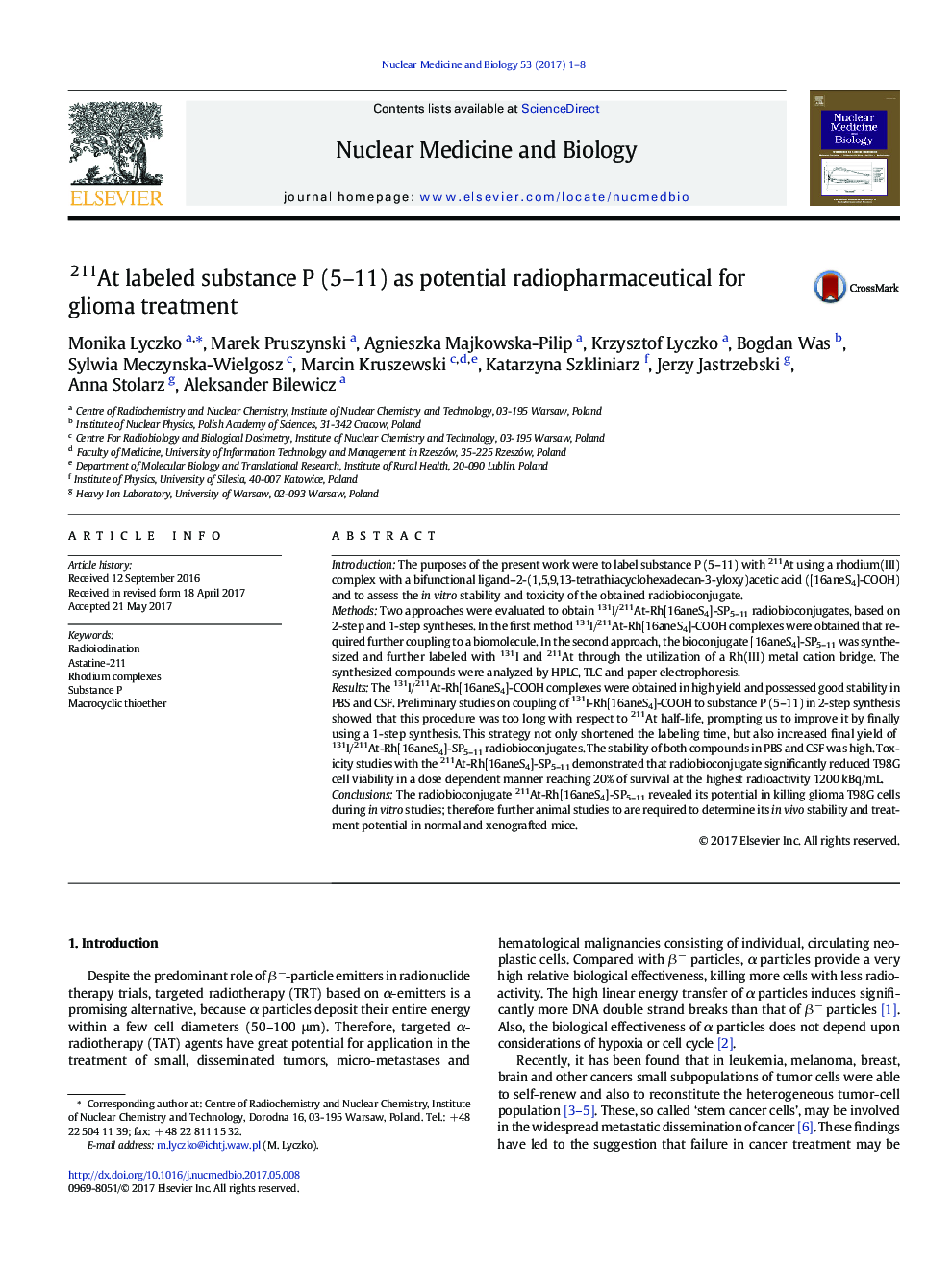| Article ID | Journal | Published Year | Pages | File Type |
|---|---|---|---|---|
| 5528967 | Nuclear Medicine and Biology | 2017 | 8 Pages |
IntroductionThe purposes of the present work were to label substance P (5-11) with 211At using a rhodium(III) complex with a bifunctional ligand-2-(1,5,9,13-tetrathiacyclohexadecan-3-yloxy)acetic acid ([16aneS4]-COOH) and to assess the in vitro stability and toxicity of the obtained radiobioconjugate.MethodsTwo approaches were evaluated to obtain 131I/211At-Rh[16aneS4]-SP5-11 radiobioconjugates, based on 2-step and 1-step syntheses. In the first method 131I/211At-Rh[16aneS4]-COOH complexes were obtained that required further coupling to a biomolecule. In the second approach, the bioconjugate [16aneS4]-SP5-11 was synthesized and further labeled with 131I and 211At through the utilization of a Rh(III) metal cation bridge. The synthesized compounds were analyzed by HPLC, TLC and paper electrophoresis.ResultsThe 131I/211At-Rh[16aneS4]-COOH complexes were obtained in high yield and possessed good stability in PBS and CSF. Preliminary studies on coupling of 131I-Rh[16aneS4]-COOH to substance P (5-11) in 2-step synthesis showed that this procedure was too long with respect to 211At half-life, prompting us to improve it by finally using a 1-step synthesis. This strategy not only shortened the labeling time, but also increased final yield of 131I/211At-Rh[16aneS4]-SP5-11 radiobioconjugates. The stability of both compounds in PBS and CSF was high. Toxicity studies with the 211At-Rh[16aneS4]-SP5-11 demonstrated that radiobioconjugate significantly reduced T98G cell viability in a dose dependent manner reaching 20% of survival at the highest radioactivity 1200Â kBq/mL.ConclusionsThe radiobioconjugate 211At-Rh[16aneS4]-SP5-11 revealed its potential in killing glioma T98G cells during in vitro studies; therefore further animal studies to are required to determine its in vivo stability and treatment potential in normal and xenografted mice.
